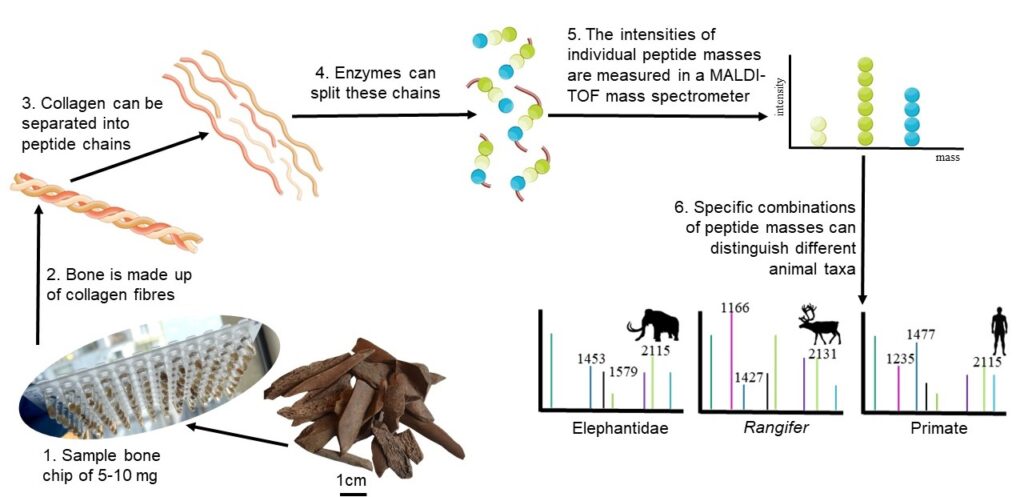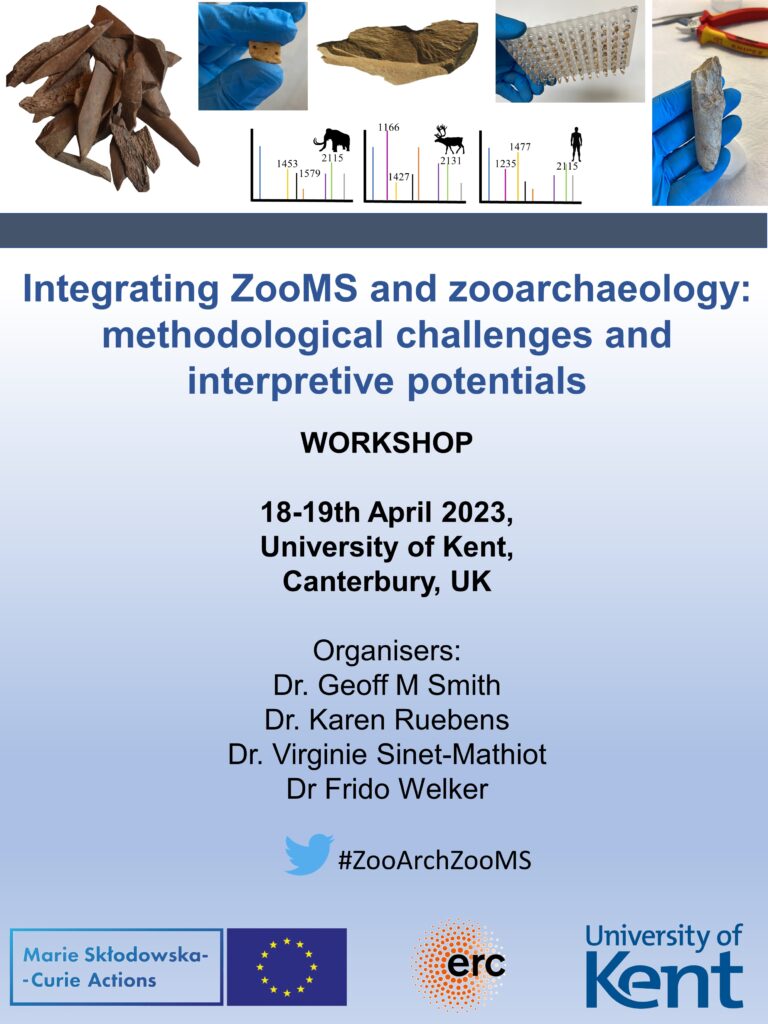 Palaeolithic faunal assemblages are dominated by small non-diagnostic bone fragments. This means that for 70-90% of the bones recovered from an Palaeolithic site we do not know what type of animal (or human) they belonged to. Consequently, these small bone fragments are largely excluded from further analyses, but they form the central focus of our project. In COEXIST, alongside traditional zooarchaeology and taphonomy, we will apply Zooarchaeology by Mass Spectrometry (ZooMS) to these morphologically unidentifiable bone fragments. Moreover, we will be developing and applying an interdisciplinary approach, fully integrating ZooMS with cutting-edge methodologies from archaeological science, proteomics and genetics.
Palaeolithic faunal assemblages are dominated by small non-diagnostic bone fragments. This means that for 70-90% of the bones recovered from an Palaeolithic site we do not know what type of animal (or human) they belonged to. Consequently, these small bone fragments are largely excluded from further analyses, but they form the central focus of our project. In COEXIST, alongside traditional zooarchaeology and taphonomy, we will apply Zooarchaeology by Mass Spectrometry (ZooMS) to these morphologically unidentifiable bone fragments. Moreover, we will be developing and applying an interdisciplinary approach, fully integrating ZooMS with cutting-edge methodologies from archaeological science, proteomics and genetics.
Zooarchaeology by Mass Spectrometry (ZooMS)
Collagen is the most abundant protein in ancient animal tissues. After extraction, collagen can be broken down into its building blocks, peptides. The intensities of individual peptide masses (m/z) can be measured with a MALDI mass spectrometer. Identifying specific combinations of peptide masses within a sample allows it to be assigned to a specific animal taxon. This ZooMS method was developed in 2009 (Buckley et al. 2009) and has been applied successfully to archaeological samples from different time periods. The broader potential of ZooMS is twofold. Firstly, it changes our knowledge of human subsistence, including site use, species diversity, and carcass processing behaviour. Secondly, it can identify human remains that do not retain enough features to be identified morphologically. ZooMS has now successfully identified human remains from a range of Palaeolithic archaeological contexts.

Integrating ZooMS and Zooarchaeology
 The last decade ZooMS has been applied to a wide array of archaeological bone remains to identify the type of animal (or human) they belonged to. Besides targeted ZooMS studies to identify special objects or find human remains, ZooMS is now also being applied untargeted to identify large portions of the non-diagnostic fauna in an archaeological assemblage. These large-scale analyses of morphologically unidentifiable bone remains are generating vast amounts of taxonomic and complementary data. While ZooMS identifications can enhance our understanding of human subsistence practices at a site, its quantitative integration with zooarchaeological and taphonomic data and indices (such as MNE, MNI, MAU) remains underexplored.
The last decade ZooMS has been applied to a wide array of archaeological bone remains to identify the type of animal (or human) they belonged to. Besides targeted ZooMS studies to identify special objects or find human remains, ZooMS is now also being applied untargeted to identify large portions of the non-diagnostic fauna in an archaeological assemblage. These large-scale analyses of morphologically unidentifiable bone remains are generating vast amounts of taxonomic and complementary data. While ZooMS identifications can enhance our understanding of human subsistence practices at a site, its quantitative integration with zooarchaeological and taphonomic data and indices (such as MNE, MNI, MAU) remains underexplored.
In 2023 we organised a workshop at the University of Kent, aimed at starting a closer collaboration between zooarchaeologists and archaeological scientists in an effort to overcome some of the current methodological problems. The program of this workshop can be found here, alongside a report in the ICAZ newsletter. Several of the presented papers are currently being prepared for publication as part of a special issue on the integration of ZooMS and Zooarchaeology in the open access journal PaleoAnthropology.
A second workshop is planned to be held in Paris autumn 2024.
Summary|Background|Objectives|Methods|Laboratory|Team |Partners |News
